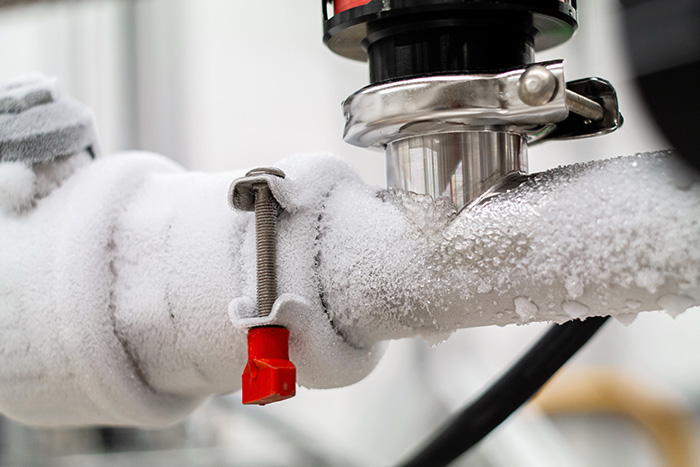Listed here below you might get additional wonderful additional info relating to Preventing and dealing with frozen pipes.

Cold weather can damage your pipes, particularly by freezing pipelines. Right here's just how to prevent it from taking place and what to do if it does.
Introduction
As temperature levels decrease, the danger of frozen pipelines boosts, potentially causing expensive repair services and water damages. Recognizing just how to prevent frozen pipelines is essential for home owners in cold climates.
Avoidance Tips
Shielding prone pipelines
Cover pipes in insulation sleeves or make use of heat tape to protect them from freezing temperature levels. Focus on pipes in unheated or external locations of the home.
Home heating methods
Keep indoor spaces sufficiently heated, specifically areas with plumbing. Open cupboard doors to enable cozy air to distribute around pipes under sinks.
Just how to identify frozen pipes
Seek lowered water flow from faucets, uncommon odors or sounds from pipelines, and noticeable frost on revealed pipes.
Long-Term Solutions
Structural modifications
Think about rerouting pipelines far from outside wall surfaces or unheated locations. Include added insulation to attic rooms, cellars, and crawl spaces.
Updating insulation
Purchase high-grade insulation for pipelines, attics, and walls. Proper insulation assists preserve regular temperature levels and reduces the risk of frozen pipes.
Safeguarding Outside Pipes
Garden pipes and outside taps
Separate and drain pipes yard hose pipes before winter. Mount frost-proof faucets or cover outside faucets with shielded caps.
Recognizing Icy Pipes
What causes pipelines to freeze?
Pipes freeze when exposed to temperature levels listed below 32 ° F (0 ° C) for extended durations. As water inside the pipes freezes, it broadens, putting pressure on the pipeline walls and possibly triggering them to break.
Threats and problems
Icy pipelines can bring about water disturbances, property damages, and costly fixings. Ruptured pipes can flooding homes and trigger substantial architectural damages.
Signs of Frozen Water Lines
Determining icy pipes early can avoid them from rupturing.
What to Do If Your Pipes Freeze
Immediate activities to take
If you think frozen pipes, keep faucets open to ease pressure as the ice melts. Use a hairdryer or towels taken in hot water to thaw pipes gradually.
Verdict
Preventing icy pipelines calls for positive procedures and quick feedbacks. By understanding the causes, indicators, and preventive measures, property owners can shield their pipes during winter.
5 Ways to Prevent Frozen Pipes
Drain Outdoor Faucets and Disconnect Hoses
First, close the shut-off valve that controls the flow of water in the pipe to your outdoor faucet. Then, head outside to disconnect and drain your hose and open the outdoor faucet to allow the water to completely drain out of the line. Turn off the faucet when done. Finally, head back to the shut-off valve and drain the remaining water inside the pipe into a bucket or container. Additionally, if you have a home irrigation system, you should consider hiring an expert to clear the system of water each year.
Insulate Pipes
One of the best and most cost-effective methods for preventing frozen water pipes is to wrap your pipes with insulation. This is especially important for areas in your home that aren’t exposed to heat, such as an attic. We suggest using foam sleeves, which can typically be found at your local hardware store.
Keep Heat Running at 65
Your pipes are located inside your walls, and the temperature there is much colder than the rest of the house. To prevent your pipes from freezing, The Insurance Information Institute suggests that you keep your home heated to at least 65 degrees, even when traveling. You may want to invest in smart devices that can keep an eye on the temperature in your home while you’re away.
Leave Water Dripping
Moving water — even a small trickle — can prevent ice from forming inside your pipes. When freezing temps are imminent, start a drip of water from all faucets that serve exposed pipes. Leaving a few faucets running will also help relieve pressure inside the pipes and help prevent a rupture if the water inside freezes.
Open Cupboard Doors
Warm your kitchen and bathroom pipes by opening cupboards and vanities. You should also leave your interior doors ajar to help warm air circulate evenly throughout your home.

Hopefully you liked our piece on How to Prevent Your Pipes From Freezing. Thanks for taking time to read our content. So long as you enjoyed our post kindly consider to pass it around. Thank you so much for going through it.
Click For More Info
Comments on “Tips to Protect Pipes from Cold Weather: Expert Tips”